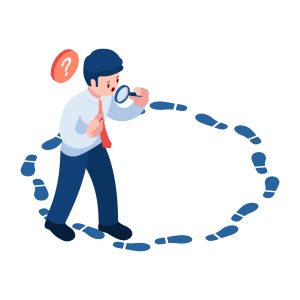The Adaptive Intelligence Cycle™

From Better Ideas to Better Execution — A System for Strategic Readiness
In a world of accelerating complexity, leaders are told to be agile, resilient, and innovative. But few are given a repeatable system for how to think, decide, and adapt in real time.
That’s why I developed the Adaptive Intelligence Cycle™ — a philosophically grounded, field-tested framework that helps leaders move from coping to creating. It’s built on four interlocking phases:
Identify Good Ideas
Develop Good Explanations
Create Good Functionality
Optimise Good Execution
Each phase draws on deep theory — from Popper’s falsifiability to Deutsch’s good explanations, Hazen & Wong’s functional information, and the seven levers of Change Fitness™ — but translates into practical tools leaders can use today.
Let’s walk through the cycle.
Phase 1: Identify Good Ideas
Filter for what’s worth testing.
Most organisations are flooded with ideas. Some are recycled slogans. Others are reactive guesses. The challenge isn’t generating ideas — it’s filtering for the ones that deserve experimentation.
Here, we apply Popper’s falsifiability filter:
“Is this idea testable? Could it, in principle, be proven wrong?”
If not, it’s not a hypothesis — it’s a belief. And beliefs, while powerful, don’t belong in the experimentation loop until they’re reframed as testable propositions.
Example: A leadership team says, “We need to improve team engagement.” That’s a goal, not a testable idea. A better version: “If we introduce weekly peer-led retros, engagement scores will rise by 10% in 60 days.” Now we have a falsifiable hypothesis.
This phase also draws on Change Fitness™ — especially the levers of Insight and Vision. Leaders must be able to identify patterns, clearly name problems, and align ideas with a meaningful direction.
Phase 2: Develop Good Explanations
Ensure the idea is worth testing.
Not all testable ideas are worth your time. That’s where David Deutsch’s “good explanation” test comes in.
A good explanation is:
Hard to vary — it can’t be easily tweaked without breaking its logic
Deep — it accounts for the phenomenon across contexts
Non-ad hoc — it doesn’t rely on convenient exceptions
Example: Let’s say a manager believes, “Remote workers are less engaged because they’re not in the office.” That’s a shallow explanation — easy to vary, context-bound, and likely ad hoc.
A better explanation might be: “Engagement drops when feedback loops are delayed, regardless of location.” This is harder to vary, applies across settings, and points to a functional mechanism.
This phase is where Deutsch’s optimism meets Popper’s discipline. We don’t just test ideas — we test explanations that could unlock broader insight.
Phase 3: Create Good Functionality
Run experiments that evolve the system.
Once we have a good explanation, we move into configuration trials — experiments designed to test whether the explanation holds and whether it improves system performance.
Here we draw on Hazen & Wong’s Law of Increasing Functional Information:
Systems evolve by generating, testing, and retaining configurations that work.
This is where most organisations falter. They run “pilots” without kill criteria. They collect data but don’t retain the learning. They treat experiments as one-offs, not as part of a system evolution loop.
Example: A team tests a new onboarding flow for remote hires. They define:
Hypothesis: “A buddy system will reduce time-to-productivity by 20%.”
Kill criteria: “If productivity doesn’t improve after 3 weeks, we revert.”
Retention ritual: “If it works, we document and embed it into the playbook.”
Now the experiment isn’t just a test — it’s a configuration trial. If successful, it becomes part of the organisation’s functional intelligence.
This phase activates the Agency, Trust, and Balance levers of Change Fitness™. Leaders must empower teams to run tests, protect psychological safety, and strike a balance between speed and reflection.
Phase 4: Optimise Good Execution
Embed what works and scale what matters.
Once a configuration proves functional, we optimise it — not by polishing it endlessly, but by embedding it into the system and scaling its impact.
This is where retention becomes strategic. We ask:
What made this configuration work?
Can it be transferred to other contexts?
What supporting beliefs or behaviours need to shift?
Example: A successful buddy system improves onboarding. Now we ask:
Can we apply the same principle to cross-functional collaboration?
What beliefs (e.g. “I shouldn’t ask for help”) need to be re-authored?
What rituals will keep this alive without over-engineering?
This phase draws heavily on all the change fitness levers. Leaders must help teams internalise the win, reframe their identity narratives, and stay energised for the next cycle.
Why This Cycle Matters Now
In an AI-accelerated world, leaders will be flooded with options, data, and noise. The Adaptive Intelligence Cycle™ gives them a way to:
Filter ideas with philosophical rigour
Test explanations with epistemic discipline
Run experiments that evolve the system
Embed wins with human-centred execution.
It’s not just a framework. It’s a rhythm — one that builds Strategic Readiness over time.
Final Thought
Most leadership models focus on traits. This one focuses on thinking, testing, and evolving.
Because of complexity, the leaders who thrive aren’t the ones with the best answers — They’re the ones with the best systems for improving their answers.
The Adaptive Intelligence Cycle™ is that system.
Let’s build your rhythm.
